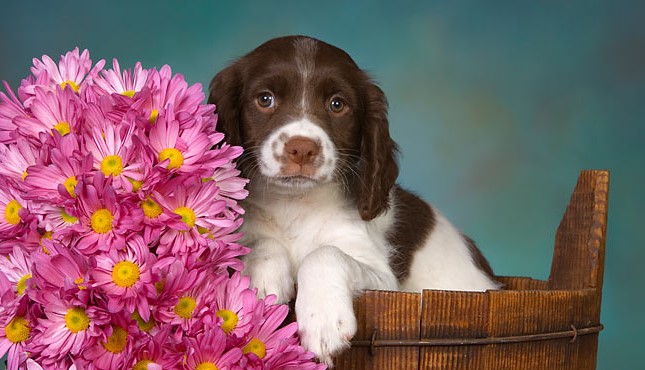
The English Springer Spaniel is a friendly, playful, and obedient dog with great energy and unique stamina. Sports hunters value their Springers very much: they are beautiful, pleasant pets and reliable, hardworking hunting companions.
Personality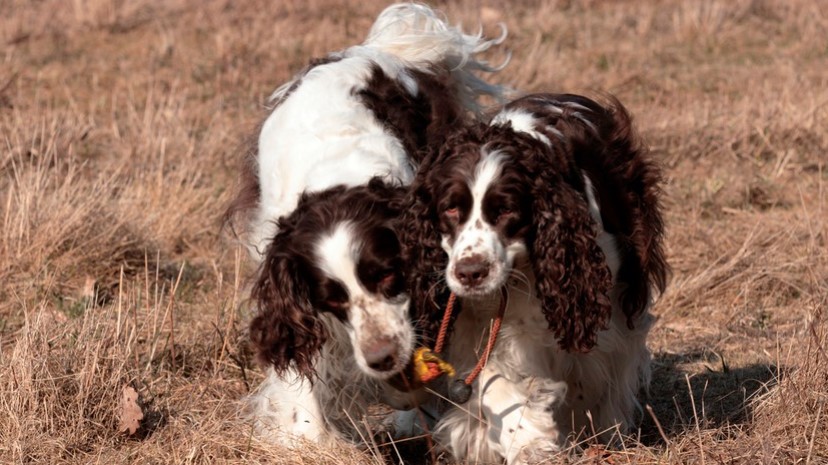
Very kind, cheerful, and friendly with everyone, the English Springer fits perfectly into the daily life of a large active family. It is a very good companion for people of all ages. He equally enjoys spending time playing with children or doing more thoughtful activities with adults. Less restless than its “cousin” the Cocker Spaniel, this dog is still quite active and does not have the habit of settling down until all its needs are met.
Cowardice or, conversely, aggressiveness in Springers is a defect of behavior. Springer is characterized by a friendly attitude towards everyone, even strangers, especially if they behave peacefully.
This dog is happy only in contact with its owner, therefore it does not tolerate his long absence. An English Springer puppy should be taught from an early age to be alone at times. This training should be carried out sequentially, gradually increasing the time of your absence from a few minutes to several hours. However, try not to leave your Springer Spaniel alone too often for long periods of time so that it does not develop behavioral disorders (anxiety, destructive tendencies, excessive barking, etc.).
The English Springer Spaniel is perhaps the most obedient hunting dog. He loves to please the owner and all members of his family. This dog is very upset when it is scolded or punished, so its education should be based solely on methods of positive reinforcement. At the same time, you must be firm, persistent, and confident, especially when teaching your dog to walk on a leash and practicing commands.
Springers are able to rejoice in any little things and at such moments they can express their emotions very loudly. Whether you’re back from work or going for a walk, your Spaniel’s glee will be heard by all the neighbors. His happiness cannot always fit in such a small body, so it will often burst out in the form of barking. Springer can also bark if he wants to gain attention, express his displeasure, or simply release excess energy.
Not being a very good guard, the English Springer still remains vigilant, especially around the owner. If he senses that his family members are in danger, his reaction may surprise you.
This dog is well suited for both an experienced owner and a beginner if he is ready to work with a Springer and provide him with the necessary.
Breed Standard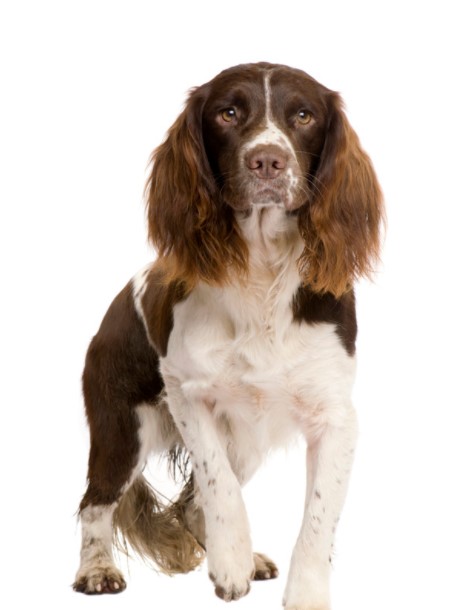
- Height: from 46 to 56 cm
- Weight: 18 to 25 kg
The English Springer Spaniel is the longest-legged English Spaniel, but very compact. An intellectual with a friendly, tirelessly cheerful character. Cowardice or aggressive behavior is unacceptable.
Square, muscular, strong, yet incredibly elegant. The head is moderately long, proportionally broad. Shouldn’t look rude. The skull is slightly rounded, divided by a groove between the eyes, which tapers off from the forehead to the back of the head. The back of the head should not be too bulging and rough. Muzzle with the typical gentle expression of a Spaniel, not large, clearly rectangular in shape with a well-pronounced fracture and square edge. The nose is wide enough, with large rounded nostrils, always wide open, which provides the strength of the flair characteristic of this breed. The nose is black or brown, according to the color of the coat. The eyes are almond-shaped, of medium size, normally deep, well-positioned in the sockets. Dark walnut color. Light eye color is undesirable. The attentive, kind expression is especially noted. The ears are set low at eye level, patchy, oblong, up to the nose. Abundantly and beautifully trimmed with significantly elongated, slightly wavy, silky hair.
The neck tapers accordingly to the head, moderately long and muscular, well set. The suspension is not allowed. The back is muscular, broad, strong, and hardy. The withers are high and well defined. The loin is well-knit, well-muscled, and slightly arched. The croup is somewhat sloping, rounded, not dry. The tail is set relatively low, harmoniously continuing the line of the back. It does not rise above the level of the back. Decorated with abundant wool, very agile and expressive. The chest is broad and deep, well developed, with visibly arched, strong ribs. The belly is well tucked up, without a catch.
Legs with good knee flexion and short metatarsals for long, fast running. Well defined, with sufficient angles. Dry, light, and muscular. With a wide, confident, parallel set. Small, neat “cat” paw, fingers are well compressed in a ball. Elastic pads of black or brown color. Movement characteristic of this breed: the front legs straight and forward from the shoulder are thrown out easily and freely. The hind legs follow the movements of the front ones. At a slow pace of movement, amble is allowed.
The coat is dense, silky, of medium length. On the ears, on the chest, on the legs, and on the abdomen, there is a longer, but not too, slightly wavy fringe of hair. Curly and downy hair is not allowed.
Color – liver-piebald, black-piebald, and the same colors with a tan. In a solid color, no white spots are allowed except for a white spot on the chest.
Care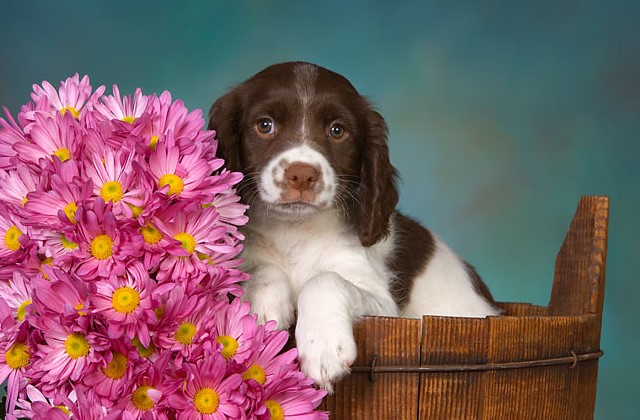
The English Springer Spaniel needs regular but uncomplicated grooming. Many dogs of this breed like to lie in the mud, after which they need to be washed with the obligatory subsequent drying and brushing. Seasonal molting in these dogs is fairly moderate, but during this period the Spaniel needs daily brushing. The show variety of Springers usually sheds somewhat more profusely than the working variety.
Health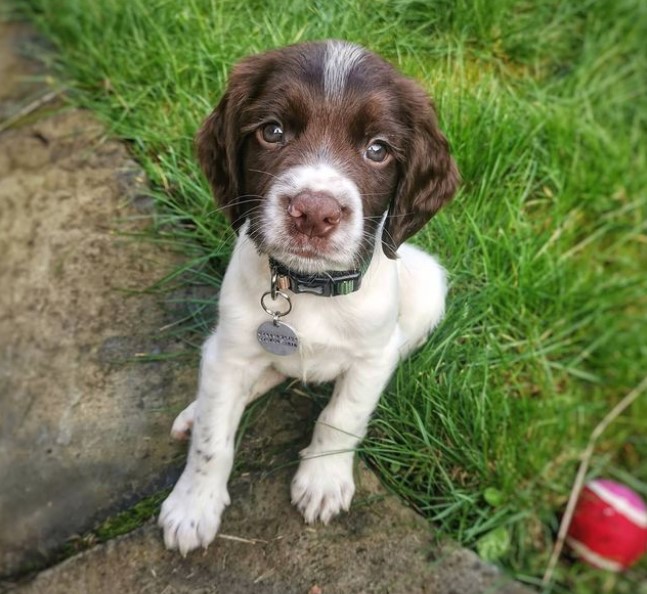
Despite the fact that the Springer Spaniel is a very healthy and robust breed, these dogs have their own problems with hereditary diseases. Discuss genetic testing with prospective breeders, especially for heart problems. These dogs are especially prone to ventricular septal defects, which require correction at an early age.
The following diseases can also occur in dogs of this breed: primary seborrhea, immune-mediated hemolytic anemia (IMHA), congenital myasthenia gravis, alpha-fucosidosis, and eye diseases.
History of the Breed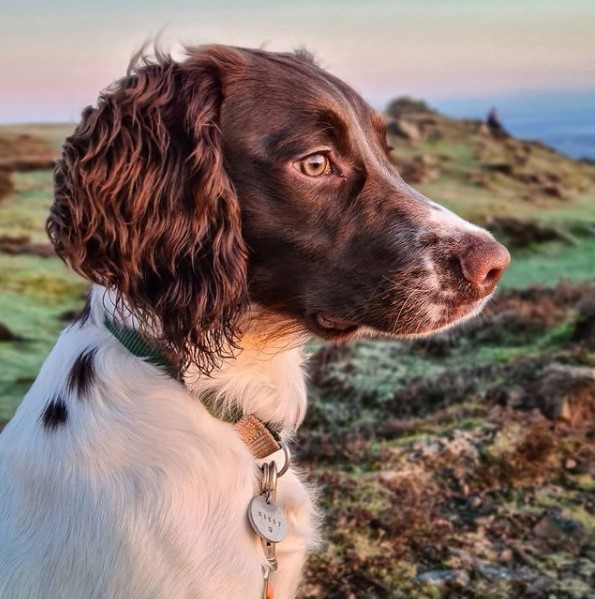
The English Springer Spaniel first appeared centuries ago for hunting birds that live in the mountains. The ancestors of this dog arrived in England from Spain in the middle of the 16th century. Before the invention of wheel-lock firearms in the 17th century, Spaniels worked in tandem with hunters who used bows, nets, falcons, and combinations thereof.
After the advent of hunting firearms, the task of the English Springer was to find birds in tall grass or brambles, drive them out of cover under a shot, and then bring the killed bird. A historical book on hunting suggests that Springer is willing to work tirelessly in the field all day to enjoy his home and family.
During the long history of British Spaniels, dogs described as “Cockers” or “Springers” were often born in the same litter. It took many generations of careful, targeted breeding before the English Springer Spaniel, English Cocker Spaniel and Field Spaniel became separate breeds.
In 1902, the Kennel Club (England) developed the standard for the English Springer Spaniel. It was created with the physical standard from the Spaniel Club of England and the ability standard from the Sporting Spaniel Society.
In America, English Springers gained fame in the 1920s, immediately declaring themselves as tireless and quick-witted hunters in the vastness of America and Canada.
The breed became widely known only after the Second World War, but in recent years it has been constantly gaining popularity due to its pleasant character, quick-wittedness, and excellent working qualities.






